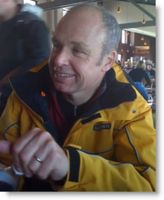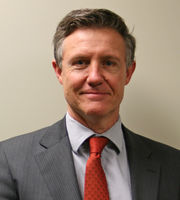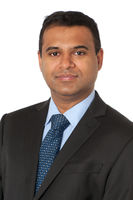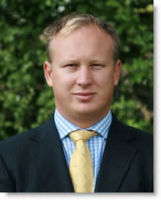Canterbury > Private Hospitals & Specialists > Southern Cross Hospitals >
Southern Cross Christchurch Hospital - General Surgery
Private Surgical Service, General Surgery
Description
Southern Cross Hospital in Christchurch is the largest hospital within our national network.
Owned by Southern Cross since 1979, the centrally situated hospital campus includes one of the biggest and most advanced private surgical hospitals in the South Island.
The Christchurch hospital campus has seen significant upgrades and new facilities in recent years, and typically provides services to around 9,500 patients each year. Facilities include digital operating theatres, an advanced 'hybrid' operating room, systems for robotically-assisted surgery, advanced digital scanning technologies, consulting facilities and a purpose built endoscopy centre.
Consultants
-

Dr Sarah Abbott
General Surgeon
-

Grant Coulter
General Surgeon & Endoscopist
-

Birgit Dijkstra
General Surgeon
-

Mr Timothy Eglinton
General Surgeon
-

Prof Frank Frizelle
General Surgeon & Endoscopist
-

Mr John Frye
General Surgeon
-

Todd Hore
General, Hepatopancreatobiliary and Endoscopic Surgeon
-

Steven Kelly
General Surgeon
-

Mr Matthew Leeman
General Surgeon
-

Dr Craig Lynch
General Surgeon
-

Dr James Mckay
General Surgeon
-

Philippa Mercer
General Surgeon
-

Dr Richard Perry
General Surgeon
-

Mr Rukshan Ranjan
General Surgeon
-

Mr Ross Roberts
General Surgeon
-

Greg Robertson
General Surgeon
-

Mr Prashant Sharma
General Surgeon
-

Dr Michael Swinden
General Surgeon
-

Mr Richard Tapper
General Surgeon
-

Dr Josie Todd
General Surgeon
-

Mr Christopher Wakeman
General Surgeon
-

Dr Hayley Waller
General, Breast and Endocrine Surgeon
Procedures / Treatments
Laparoscopic: several small incisions (cuts) are made in the lower right abdomen (stomach) and a narrow tube with a tiny camera attached (laparoscope) in inserted. This allows the surgeon a view of the appendix and, by inserting small surgical instruments through the other cuts, the appendix can be removed. Open: an incision is made in the lower right abdomen and the appendix removed.
Laparoscopic: several small incisions (cuts) are made in the lower right abdomen (stomach) and a narrow tube with a tiny camera attached (laparoscope) in inserted. This allows the surgeon a view of the appendix and, by inserting small surgical instruments through the other cuts, the appendix can be removed. Open: an incision is made in the lower right abdomen and the appendix removed.
Open Excisional: a small incision (cut) is made as close as possible to the lump and the lump, together with a surrounding margin of tissue, is removed for examination. If the lump is large, only a portion of it may be removed. Fine Needle Aspiration and Core Needle Biopsy: both these procedures involve inserting a needle through your skin into the breast lump and removing a sample of tissue for examination.
Open Excisional: a small incision (cut) is made as close as possible to the lump and the lump, together with a surrounding margin of tissue, is removed for examination. If the lump is large, only a portion of it may be removed. Fine Needle Aspiration and Core Needle Biopsy: both these procedures involve inserting a needle through your skin into the breast lump and removing a sample of tissue for examination.
A silicone sack filled with either silicone gel or saline (salt water) is inserted underneath your chest muscle and skin. Before being inserted, the skin will sometimes need to be stretched to the required breast size. This is done by placing an empty bag where the implant will finally go, and gradually filling it with saline over weeks or months. The bag is then replaced by the implant in another operation.
A silicone sack filled with either silicone gel or saline (salt water) is inserted underneath your chest muscle and skin. Before being inserted, the skin will sometimes need to be stretched to the required breast size. This is done by placing an empty bag where the implant will finally go, and gradually filling it with saline over weeks or months. The bag is then replaced by the implant in another operation.
Laparoscopic: several small incisions (cuts) are made in the abdomen (stomach) and a narrow tube with a tiny camera attached (laparoscope) is inserted. This allows the surgeon a view of the gallbladder and, by inserting small surgical instruments through the other cuts, the gallbladder can be removed. Open: an abdominal incision is made and the gallbladder removed.
Laparoscopic: several small incisions (cuts) are made in the abdomen (stomach) and a narrow tube with a tiny camera attached (laparoscope) is inserted. This allows the surgeon a view of the gallbladder and, by inserting small surgical instruments through the other cuts, the gallbladder can be removed. Open: an abdominal incision is made and the gallbladder removed.
Laparoscopic: several small incisions (cuts) are made in the abdomen and a narrow tube with a tiny camera attached (laparoscope) is inserted. This allows the surgeon a view of the colon and, by inserting small surgical instruments through the other cuts, part or all of the colon can be removed. Open: an abdominal incision is made and part or all of the colon is removed.
Laparoscopic: several small incisions (cuts) are made in the abdomen and a narrow tube with a tiny camera attached (laparoscope) is inserted. This allows the surgeon a view of the colon and, by inserting small surgical instruments through the other cuts, part or all of the colon can be removed. Open: an abdominal incision is made and part or all of the colon is removed.
A long, narrow tube with a tiny camera attached (colonoscope) is inserted into your anus and then moved along the entire colon. This allows the surgeon a view of the lining of the colon. Sometimes a biopsy (small piece of tissue) will be taken during the procedure for later examination at a laboratory. Polyps (small growths of tissue projecting into the bowel) may be removed during a colonoscopy.
A long, narrow tube with a tiny camera attached (colonoscope) is inserted into your anus and then moved along the entire colon. This allows the surgeon a view of the lining of the colon. Sometimes a biopsy (small piece of tissue) will be taken during the procedure for later examination at a laboratory. Polyps (small growths of tissue projecting into the bowel) may be removed during a colonoscopy.
An opening is made in the skin of the abdomen (stomach) to allow drainage of stools (faeces) from the colon into a collection bag on the outside. This may be temporary to allow time for healing of the colon or, if the entire colon has been removed, it may be permanent.
An opening is made in the skin of the abdomen (stomach) to allow drainage of stools (faeces) from the colon into a collection bag on the outside. This may be temporary to allow time for healing of the colon or, if the entire colon has been removed, it may be permanent.
Partial: the diseased part of the stomach is removed and the remaining section is reattached to the oesophagus (food pipe) or small intestine. Total: all of the stomach is removed and the oesophagus is attached directly to the small intestine.
Partial: the diseased part of the stomach is removed and the remaining section is reattached to the oesophagus (food pipe) or small intestine. Total: all of the stomach is removed and the oesophagus is attached directly to the small intestine.
A long, flexible tube with a tiny camera attached (gastroscope) is inserted through your mouth and moved down your digestive tract. This allows the surgeon a view of the upper part of your digestive tract i.e. oesophagus (food pipe), stomach and duodenum (top section of the small intestine). Sometimes a biopsy (small tissue sample) will need to be taken during the procedure for later examination at a laboratory.
A long, flexible tube with a tiny camera attached (gastroscope) is inserted through your mouth and moved down your digestive tract. This allows the surgeon a view of the upper part of your digestive tract i.e. oesophagus (food pipe), stomach and duodenum (top section of the small intestine). Sometimes a biopsy (small tissue sample) will need to be taken during the procedure for later examination at a laboratory.
Haemorrhoidectomy: each haemorrhoid or pile is tied off and then cut away. Stapled Haemorrhoidectomy: a circular stapling device is used to pull the haemorrhoid tissue back into its normal position.
Haemorrhoidectomy: each haemorrhoid or pile is tied off and then cut away. Stapled Haemorrhoidectomy: a circular stapling device is used to pull the haemorrhoid tissue back into its normal position.
Hiatus Hernia Laparoscopic: several small incisions (cuts) are made in the abdomen (stomach) and a narrow tube with a tiny camera attached (laparoscope) is inserted. Small instruments are inserted through the other cuts, allowing the surgeon to push the hernia (part of the stomach and lower oesophagus that is bulging into the chest) back into position in the abdominal cavity. The hiatus (opening) in the diaphragm (a sheet of muscle between the chest and stomach) is tightened and the stomach is stitched into place. Open: an abdominal incision is made over the hernia and the hernia is pushed back into position in the abdominal cavity. The hiatus (opening in the diaphragm) is tightened and the stomach is stitched into place. Fundoplication: during the above procedures, the top part of the stomach (fundus) may be secured in position by wrapping it around the oesophagus. Inguinal Hernia Laparoscopic: several small incisions are made in the abdomen and a narrow tube with a tiny camera attached (laparoscope) is inserted. Small instruments are inserted through the other cuts, allowing the surgeon to push the hernia (part of the intestine that is bulging through the abdominal wall) back into its original position. The weakness in the abdominal wall is repaired. Open: an abdominal incision is made and the hernia is pushed back into position. The weakness in the abdominal wall is repaired. Umbilical Hernia An incision is made underneath the navel (tummy button) and the hernia (part of the intestine that is bulging through the abdominal wall) is pushed back into the abdominal cavity. The weakness in the abdominal wall is repaired. Incisional Hernia Laparoscopic: several small incisions are made in the abdomen and a narrow tube with a tiny camera attached (laparoscope) is inserted. Small instruments are inserted through the other cuts, allowing the surgeon to push the hernia (part of the intestine that is bulging through the abdominal wall) back into its original position. Open: an abdominal incision is made and the hernia is pushed back into position.
Hiatus Hernia Laparoscopic: several small incisions (cuts) are made in the abdomen (stomach) and a narrow tube with a tiny camera attached (laparoscope) is inserted. Small instruments are inserted through the other cuts, allowing the surgeon to push the hernia (part of the stomach and lower oesophagus that is bulging into the chest) back into position in the abdominal cavity. The hiatus (opening) in the diaphragm (a sheet of muscle between the chest and stomach) is tightened and the stomach is stitched into place. Open: an abdominal incision is made over the hernia and the hernia is pushed back into position in the abdominal cavity. The hiatus (opening in the diaphragm) is tightened and the stomach is stitched into place. Fundoplication: during the above procedures, the top part of the stomach (fundus) may be secured in position by wrapping it around the oesophagus. Inguinal Hernia Laparoscopic: several small incisions are made in the abdomen and a narrow tube with a tiny camera attached (laparoscope) is inserted. Small instruments are inserted through the other cuts, allowing the surgeon to push the hernia (part of the intestine that is bulging through the abdominal wall) back into its original position. The weakness in the abdominal wall is repaired. Open: an abdominal incision is made and the hernia is pushed back into position. The weakness in the abdominal wall is repaired. Umbilical Hernia An incision is made underneath the navel (tummy button) and the hernia (part of the intestine that is bulging through the abdominal wall) is pushed back into the abdominal cavity. The weakness in the abdominal wall is repaired. Incisional Hernia Laparoscopic: several small incisions are made in the abdomen and a narrow tube with a tiny camera attached (laparoscope) is inserted. Small instruments are inserted through the other cuts, allowing the surgeon to push the hernia (part of the intestine that is bulging through the abdominal wall) back into its original position. Open: an abdominal incision is made and the hernia is pushed back into position.
Simple or Total: all breast tissue, skin and the nipple are surgically removed but the muscles lying under the breast and the lymph nodes are left in place. Modified Radical: all breast tissue, skin and the nipple as well as some lymph tissue are surgically removed. Partial: the breast lump and a portion of other breast tissue (up to one quarter of the breast) as well as lymph tissue are surgically removed. Lumpectomy: the breast lump and surrounding tissue, as well as some lymph tissue, are surgically removed. When combined with radiation treatment, this is known as breast-conserving surgery.
Simple or Total: all breast tissue, skin and the nipple are surgically removed but the muscles lying under the breast and the lymph nodes are left in place. Modified Radical: all breast tissue, skin and the nipple as well as some lymph tissue are surgically removed. Partial: the breast lump and a portion of other breast tissue (up to one quarter of the breast) as well as lymph tissue are surgically removed. Lumpectomy: the breast lump and surrounding tissue, as well as some lymph tissue, are surgically removed. When combined with radiation treatment, this is known as breast-conserving surgery.
An incision (cut) is made in the front of and at the base of the neck and one or more of the parathyroid glands are removed.
An incision (cut) is made in the front of and at the base of the neck and one or more of the parathyroid glands are removed.
An incision (cut) is made in front of the ear and runs down below the jaw line. Part or all of the parotid gland is removed.
An incision (cut) is made in front of the ear and runs down below the jaw line. Part or all of the parotid gland is removed.
Laparoscopic: several small incisions (cuts) are made in the abdomen (stomach) and a narrow tube with a tiny camera attached (laparoscope) is inserted. This allows the surgeon to view the rectum and, by inserting small surgical instruments through the other cuts, part or all of the rectum can be removed. Open: an abdominal incision is made and part or all of the rectum removed.
Laparoscopic: several small incisions (cuts) are made in the abdomen (stomach) and a narrow tube with a tiny camera attached (laparoscope) is inserted. This allows the surgeon to view the rectum and, by inserting small surgical instruments through the other cuts, part or all of the rectum can be removed. Open: an abdominal incision is made and part or all of the rectum removed.
A long, narrow tube with a tiny camera attached (sigmoidoscope) is inserted into your anus and moved through your lower large intestine (bowel). This allows the surgeon a view of the lining of the lower large intestine (sigmoid colon). If necessary, a biopsy (small piece of tissue) may be taken for examination in the laboratory.
A long, narrow tube with a tiny camera attached (sigmoidoscope) is inserted into your anus and moved through your lower large intestine (bowel). This allows the surgeon a view of the lining of the lower large intestine (sigmoid colon). If necessary, a biopsy (small piece of tissue) may be taken for examination in the laboratory.
Shave Biopsy: the top layers of skin in the area being investigated are shaved off with a scalpel (surgical knife) for investigation under a microscope. Punch Biopsy: a small cylindrical core of tissue is taken from the area being investigated for examination under a microscope. Excision Biopsy: all of the lesion or area being investigated is cut out with a scalpel for examination under a microscope. Incision Biopsy: part of the lesion is cut out with a scalpel for examination under a microscope.
Shave Biopsy: the top layers of skin in the area being investigated are shaved off with a scalpel (surgical knife) for investigation under a microscope. Punch Biopsy: a small cylindrical core of tissue is taken from the area being investigated for examination under a microscope. Excision Biopsy: all of the lesion or area being investigated is cut out with a scalpel for examination under a microscope. Incision Biopsy: part of the lesion is cut out with a scalpel for examination under a microscope.
Skin lesions such as cysts and tumours are removed by cutting around and under them with a scalpel.
Skin lesions such as cysts and tumours are removed by cutting around and under them with a scalpel.
An incision (cut) is made in the front of and at the base of the neck and part or all of the thyroid gland is removed.
An incision (cut) is made in the front of and at the base of the neck and part or all of the thyroid gland is removed.
Sclerotherapy: a tiny needle is used to inject a chemical solution into the vein that causes the vein to collapse. This approach is recommended for small varicose veins only. Vein stripping: the varicose veins are cut out and the veins that branch off them are tied off. The cuts (incisions) made in the skin are closed with sutures. Phlebectomy: small cuts (incisions) are made in the leg and the varicose veins are pulled out with a tiny hook-like instrument. The cuts are closed with tape rather than sutures and, once healed, are almost invisible.
Sclerotherapy: a tiny needle is used to inject a chemical solution into the vein that causes the vein to collapse. This approach is recommended for small varicose veins only. Vein stripping: the varicose veins are cut out and the veins that branch off them are tied off. The cuts (incisions) made in the skin are closed with sutures. Phlebectomy: small cuts (incisions) are made in the leg and the varicose veins are pulled out with a tiny hook-like instrument. The cuts are closed with tape rather than sutures and, once healed, are almost invisible.
Sclerotherapy: a tiny needle is used to inject a chemical solution into the vein that causes the vein to collapse. This approach is recommended for small varicose veins only.
Vein stripping: the varicose veins are cut out and the veins that branch off them are tied off. The cuts (incisions) made in the skin are closed with sutures.
Phlebectomy: small cuts (incisions) are made in the leg and the varicose veins are pulled out with a tiny hook-like instrument. The cuts are closed with tape rather than sutures and, once healed, are almost invisible.
Visiting Hours
Weekdays 8:00 to 20:00
Weekends 8:00 to 20:00
Public Transport
The Christchurch City Council provides good public transport information. See here
Parking
Over 60 parking spaces are provided for patients and visitors.
Pharmacy
Contact Details
Southern Cross Christchurch Hospital
Canterbury
-
Phone
(03) 968 3100
-
Fax
(03) 968 3101
Email
Website
131 Bealey Avenue
Christchurch Central
Christchurch
Canterbury 8013
Street Address
131 Bealey Avenue
Christchurch Central
Christchurch
Canterbury 8013
Postal Address
P.O. Box 21-096,
Edgeware,
Christchurch, 8143
Was this page helpful?
This page was last updated at 2:33PM on April 10, 2024. This information is reviewed and edited by Southern Cross Christchurch Hospital - General Surgery.

